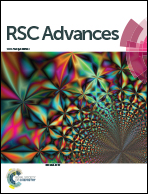PVdF/graphene oxide hybrid membranes via electrospinning for water treatment applications
Abstract
Membrane materials based on poly (vinylidene fluoride) (PVdF) have received great attention recently due to their outstanding mechanical property and chemical resistance. However, this material can easily cause a membrane fouling problem due to its hydrophobic nature. This paper describes how to overcome this problematic issue by incorporating hydrophilic graphene oxide (GO) into PVdF-based membranes. Herein, PVdF nanofiber membranes loaded with GO were prepared via an electrospinning method and the hybrid membranes were characterized for water treatment applications. Graphene oxide sheets were initially prepared by the Hummer's method. The pore property of the PVdF/GO hybrid nanofiber membrane for microfiltration (MF) applications was controlled by systematically increasing the number of nanofiber layers and thermal treatment. These resulting materials were characterized by SEM, FT-IR, UV-Vis, Raman spectroscopy, and tensometer. The overall results showed the reliable formation of the hybrid membranes which possessed controlled pore-diameters (∼0.2 micron) and narrow distribution. Based on contact angle tests, these PVdF/GO nanofiber hybrid membranes exhibited very hydrophilic characteristics. In addition, the hybrid membrane showed high pure water flux results up to 3 times and outstanding flux decline with 0.1 g L−1 Kaolin solutions compared to a neat PVdF nanofiber membrane. Based on all these results, it can be speculated that the incorporation of GO into PVdF could also improve the antifouling ability of the membrane system and will allow for their use as a water-treatment membrane.


 Please wait while we load your content...
Please wait while we load your content...